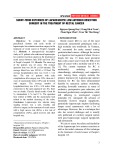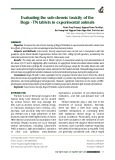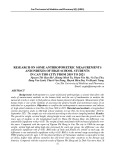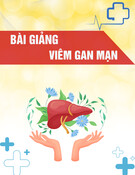
Can Tho Journal of Medicine and Pharmacy 9(6) (2023)
144
THE ANTIDEPRESSANT USAGE RATE AND TREATMENT OUTCOMES
FOR OUTPATIENTS WITH DEPRESSION
AT CAN THO PSYCHIATRIC HOSPITAL FROM 2022 TO 2023
Le Thi Cam Tu1, Lam Nhut Anh1, Le Nguyen Minh Ngoc1, Nguyen Huu Truc1,
Nguyen Thi Thanh Tam1, Nguyen Thi Nhu Trang1, Ly Huynh Vinh Hung,
Le Ngoc Cua2, Dang Duy Khanh1*
1. Can Tho University of Medicine and Pharmacy, Vietnam
2. University of Walailak, Thailand
*Corresponding author: ddkhanh@ctump.edu.vn
Received: 28/8/2023
Reviewed: 10/9/2023
Accepted: 05/10/2023
ABSTRACT
Background: Depression is a prevalent condition that affects individuals globally. It can
cause significant emotional pain and hinder one's ability to perform well in various settings such as
work, school, and home. Diagnosing and treating depression can be challenging due to limited
resources, a shortage of trained healthcare providers, and the social stigma often attached to mental
disorders. Objectives: The objective of this study is to identify the types and quantities of
antidepressant drugs prescribed and received, as well as to assess the outcomes of treatment for
depressed patients who received outpatient care at Can Tho Psychiatric Hospital between 2022 and
2023. Materials and methods: A descriptive cross-sectional study of 255 patients aged 18 and older
was conducted at Can Tho Psychiatric Hospital in 2022-2023. Data were analyzed using SPSS 20.
Results: Most patients (39.6%) were aged 18-29, and 76.1% were female. Patients had varying
levels of depression, with the majority having moderate to severe depression. The most commonly
prescribed first-line antidepressants were fluoxetine (35.3%) and sertraline (50.6%), both of which
are SSRIs (Selective serotonin reuptake inhibitors). After 2 and 6 weeks of treatment, patients'
depression levels significantly improved (p<0.001). Remission rates increased from 29.3%
(±12.4%) after 2 weeks to 69.9% (±17.8%) after 6 weeks of treatment, with a statistically significant
difference (p<0.001). While only the sleep disorder symptom group showed improvement after 2
weeks, all symptoms showed a high remission rate after 6 weeks of treatment. Improvement rates
after 2 and 6 weeks were 8.6% and 85.9%, respectively. Conclusions: SSRIs are commonly
prescribed as the first-line treatment for outpatients experiencing depression. Sertraline is the most
frequently prescribed medication. Depression is prevalent in young women between 18 and 29,
many of whom experience severe symptoms. Treatment can greatly improve all symptoms in six
weeks, with sleep disturbances showing the most improvement. It is important to seek help promptly
and recognize symptoms to achieve the best result.
Keywords: antidepression; Can Tho; SSRI; HAMD-17
I. INTRODUCTION
Depression is a common mental disorder that affects millions of people worldwide.
If left untreated, depression can significantly impact people's daily lives and ability to
perform at work or school. In severe cases, depression can lead to suicide, which accounts
for more than 1 in 100 deaths [1], [2]. Many factors contribute to the development of
depression, including genetics, environmental factors, and stressful life events. Despite the
complexity of depression, effective treatments are available, including psychotherapy and
medication. However, access to these treatments is often limited in low- and middle-income






![Study on toxicities of 10β-[(2'β-hydroxy-3'- imidazol) propyl] deoxo-artemisinin (32) in reproductive and developmental progresses of mice](https://cdn.tailieu.vn/images/document/thumbnail/2025/20250228/viinuzuka/135x160/8021740737116.jpg)

































